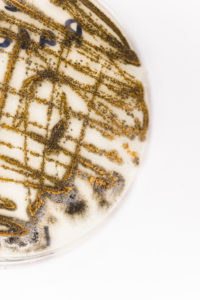Winter at the RLC
By James Farrell | February 16, 2023
Is the Winter a Time to Rest for the Research Team?
As a research team in Wisconsin, some of our busiest times are during the summer. This is when the alfalfa is growing and there is valuable data to be collected. We are traveling around the state harvesting plots, taking notes for various traits, and providing tours at the Research and Learning Center. These activities are the most visual to everyone because this is when they are here to see the work we are doing. Having a research station in the Midwest means that we are not able to be in the field all year round. So what do we do when cold weather comes and the alfalfa lies dormant beneath the snow?
 When we can no longer use the outdoors as our growing environment, we transition to our greenhouses. We have two independent greenhouses where we can control the environment to be able to grow alfalfa during our harsh winters. With this ability, are we collecting data on the same traits as during the summer? The easy answer to that is no. There are multiple reasons for that. One major reason is space. We cannot plant and harvest a yield trial in a greenhouse. Another reason is the environment of a greenhouse cannot be truly representative of our complex environment that is a grower’s field. Factors including light intensity, day length, humidity, moisture, soil type, and other environmental pressures can be controlled in a greenhouse but would not be perfectly representative of a field. Although it is not possible to replicate a true field environment in a greenhouse, we can still use the control of a greenhouse to our advantage. Testing in a controlled environment allows us to replicate and isolate specific reactions of the plants. This is important in testing for the list of diseases that are important to alfalfa growers.
When we can no longer use the outdoors as our growing environment, we transition to our greenhouses. We have two independent greenhouses where we can control the environment to be able to grow alfalfa during our harsh winters. With this ability, are we collecting data on the same traits as during the summer? The easy answer to that is no. There are multiple reasons for that. One major reason is space. We cannot plant and harvest a yield trial in a greenhouse. Another reason is the environment of a greenhouse cannot be truly representative of our complex environment that is a grower’s field. Factors including light intensity, day length, humidity, moisture, soil type, and other environmental pressures can be controlled in a greenhouse but would not be perfectly representative of a field. Although it is not possible to replicate a true field environment in a greenhouse, we can still use the control of a greenhouse to our advantage. Testing in a controlled environment allows us to replicate and isolate specific reactions of the plants. This is important in testing for the list of diseases that are important to alfalfa growers.
Screening plants for disease in the greenhouse allows us to see true genetic responses to the pathogens by removing the unpredictability of a field setting. We can control the environment and know that the plant reaction is not from another disease or environmental factor. Environmental factors like heat and humidity can alter a plants response to a pathogen making it hard to separate genetic and environmental effects. Also, certain pathogens require specific environmental conditions to grow. We can provide those conditions, specific to the pathogen, to make sure it can grow and infect the plants. This allows us to be confident the plant response that we see is genetic. When reporting disease ratings, we are concentrated on genetic response because the genetics of our varieties will stay the same from one bag to the next, but the environment the seeds are planted in will be different.
environmental factor. Environmental factors like heat and humidity can alter a plants response to a pathogen making it hard to separate genetic and environmental effects. Also, certain pathogens require specific environmental conditions to grow. We can provide those conditions, specific to the pathogen, to make sure it can grow and infect the plants. This allows us to be confident the plant response that we see is genetic. When reporting disease ratings, we are concentrated on genetic response because the genetics of our varieties will stay the same from one bag to the next, but the environment the seeds are planted in will be different.
This disease work keeps us busy collecting data in the winter. We are visibly busy in the summer, but we can be equally busy in the winter. Both seasons allow us to collect large amounts of data that needs to be analyzed and summarized. That is also a large part of what we do in the winter months.
All of this to say that the winter is not a time to rest, but an opportunity to collect and analyze more data.

